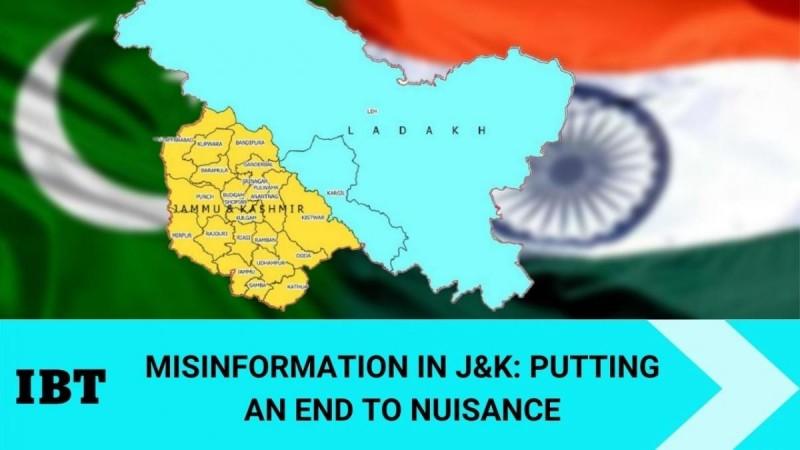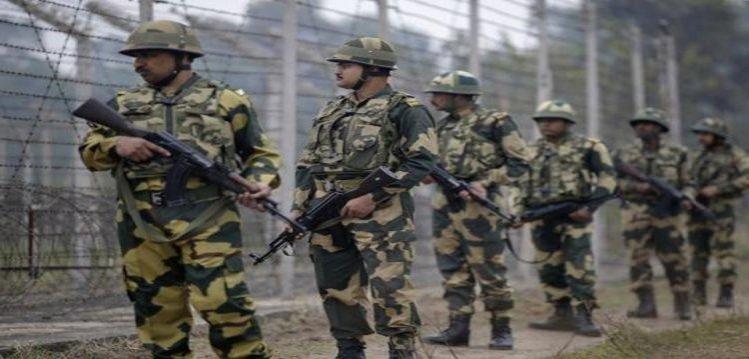Rumors and misinformation have always been rife in conflict zones, and while Kashmir is no exception, their grip on the people of the region has never been firmer. As Kashmir is surrounded by the Himalayas on all sides – which, until modern times, ensured that news was always late – years of political turmoil in the region have ensured that forms of misinformation have always enjoyed certain credibility.
The perpetual political uncertainty in the region has the rumor mill in a constant churn. In early 2016, false rumors of child deaths due to polio vaccination in the valley caused panic. Even the COVID-19 pandemic precipitated a deluge of misinformation and conspiracy theories in Kashmir. Rumors about the virus' origin spiraled, later translating into vaccine skepticism so severe that villagers attacked health officials.

In late 2017, a mysterious spate of "braid chopping" incidents led to mass hysteria and protests. Added to these constant flurry of incidents, pre-August 5, 2019 speculations and tittle-tattle made the noise even louder. The legal maneuvers by the state to revise Article 370 were followed by security measures to prevent any loss of life and to ward off any untoward law and order situation.
The communication blockade ensured that no rumors were spreading through WhatsApp and social media in the valley, the usual route for misinformation in the internet age. But on the ground, wild theories about battles being fought in mountains and scores of people being killed were rife. In the immediate aftermath of the announcement, a phalanx of armed men were ordered to stay put in neighborhood squares risking their own life in a conflict zone.
Pakistan's hand in spreading rumours
Misinformation in Kashmir emanates single-handedly from a major stakeholder in the region – Pakistan. All the misinformation campaigns, whether it be on the fronts of a healthcare catastrophe, any government scheme or any new initiative is sabotaged and scuttled by the so-called 'Kashmir activists' and "influencers" who are squarely on the payrolls of our western neighbours elaborate ecosystem of (Dis) Information warfare.
Post-August 5 2019, a deluge of fake news and repurposed old videos were circulated by fundamentalists on steroids at ISPR directorate which ranged from claims of using helicopter gunships in Srinagar to thwart protests to strife within paramilitary, defence and state forces. Such a barrage of misinformation coming from across the border has had a massive impact on the psyche of the valley.

The need to regulate internet usage, and keep a check on unruly elements has never been felt greater than today. While malformation and disinformation gets amplified umpteen times, little is being talked about the developments post the revision of Article 370. The successful completion of the District Development Council (DDC) elections and mass participation showed the resolve to return power to the people, democratic and decentralised systems of governance to achieve better governance and development. The very fact that such a big election was completed peacefully with enthusiastic participation from both sides should silence many critics about the lack of political freedom in J&K.
Putting people first
For the past 70 years, J&K has only been able to harness 3,500 MW of hydroelectricity of its total potential of 25,000 MW. Work has been initiated to raise the present capacity by another 3,000 MW. Moreover, to fully realize the potential of the UT becoming a carbon-neutral unity of the country, a 7,500 MW solar park is envisaged to be set up. According to a survey conducted by the Tata Institute of Social Sciences (TISS), Mumbai, on the Kashmiri youth, majority of the participants preferred to have a central government job and stay in Kashmir.
![J&K Film Policy: LG Manoj Sinha bringing back Kashmir's lost glory on big screens [here's how]](https://data1.ibtimes.co.in/en/full/764091/jk-film-policy-lg-manoj-sinha-bringing-back-kashmirs-lost-glory-big-screens-heres-how.jpg?h=450&l=50&t=40)
The government has acted on this aspiration and came out with a calendar of recruitment for various ministries under the National Youth Mission. The recently enacted Film Policy is another boost to the entertainment industry. It is encouraged that they should open consultancy or recruitment offices in J&K to meet the aspirations of the youth. The establishment of 'women cooperatives' is a further step in direction. The all-women environment will be an added incentive for women to make use of employment opportunities.
Such cooperatives will have an attached crèche so that that the children are cared for and spend their time in the right environment. The laundry list of achievements post-August 2019, in a span of merely two years after the perpetual stasis of 72 years suggest that the intended objectives of bringing Kashmir into the national mainstream, reducing levels of violence within the Union Territory, and expansion of jobs and economic opportunities, are an ongoing process. Levels of violence have come down, broadly approximating to what existed in pre-1989.
Current policymakers should not assume that it is a failure of imagination, or of policymaking, that prevented past leaders from understanding and finding a solution for the Kashmir problem. It would be wise for leaders in Delhi to be careful not to view immediate dividends as representing new dawn, and should instead pause to try and ascertain what lies beyond the horizon.
An intense debate must start as to where we go from here. Introspection after the initial two years has become essential. 'Strong arm populism' has its limits. A moment arises in the course of any struggle when it becomes necessary to undertake value-based judgments.
In Kashmir, the moment is now. We cannot afford any more 'evolutionary adaptations to an already dangerous social and complex environment'.
The author, Dr Suneem Khan, is a decorated medical doctor based out of Kashmir. Views expressed are author's own.
















